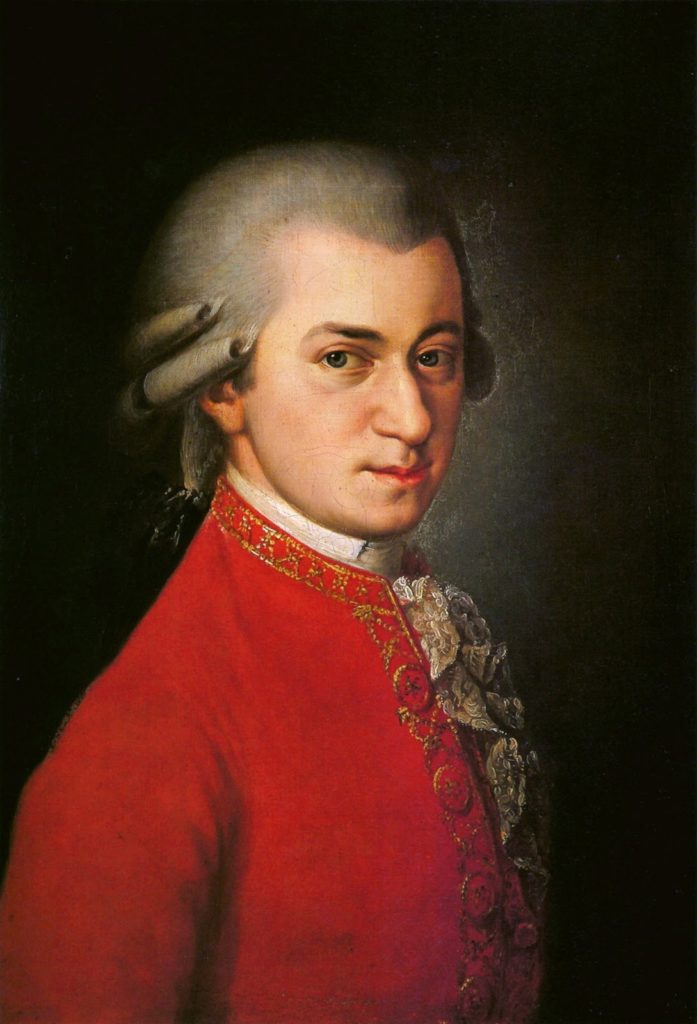American Classical Orchestra marks Halloween with spiritual Mozart and a premiere

“Recordare,” the first word of a section of the Requiem mass, means “Remember.” The English translation provided the title of a program performed by the American Classical Orchestra and Chorus under its founder and artistic director Thomas Crawford, Friday night at Alice Tully Hall.
Whether by coincidence or intent, the concert provided a different way of observing Halloween, the eve of All Hallows Day, when the departed are remembered and celebrated.
Two memorial works were on the bill: Mozart’s Requiem, commissioned to honor an aristocrat’s late wife, and Crawford’s own Elegy, written in memory of an esteemed friend and colleague, and heard in its world premiere.
Following his usual practice, Crawford opened the evening with a few helpful pointers on the Mozart work, noting instances of fugue, thematic imitation, homophony, and picturesque text-setting as the musicians played or sang a few bars of each.
Then it was on to Elegy, which the composer accurately described as an “atmospheric tableau” expressing a reflective mood brought on by the passing of Judson Griffin, a longtime exponent of period-instrument performance and, among other posts, principal violinist of the American Classical Orchestra for 30 years.
In this brief, gently evocative piece for string orchestra, a pianissimo dynamic was dominant, colored by the slender, dark sonority of gut strings. Spacious melodic lines accumulated to form harmonically ambiguous “stacked” chords. Solos for Griffin’s instruments, violin and viola, floated up briefly. Except for a few measures of accelerando in the middle, the piece gave, as the composer put it, “the impression of time passing patiently,” and departed as unobtrusively as it began.
“Opening” for Mozart’s masterpiece wasn’t an easy assignment, but this well-written, unassuming piece set the table quite satisfyingly. Its wistful mood dovetailed with the sighing violins of the Requiem’s first bars, which Crawford approached with great delicacy, matched by the modest solo “Te decet hymnus” of soprano Yulan Piao.
The choral singing in “Kyrie,” with its concluding fugue, and the ensuing “Dies irae” lacked nothing in energy, but wasn’t as intelligible as one might expect from a 20-voice ensemble in a moderate-sized hall. One found oneself wishing for clearer diction and musical articulation at various points during the evening.
The four vocal soloists shared the spotlight by turns in “Tuba mirum,” with baritone Joseph Charles Beutel sounding sturdy if a little overmatched by the solo trombone, the woody tenor of Lawrence Jones dovetailing neatly into Heather Petrie’s buttery alto, and soprano Piao stepping up with full, well-modulated tone. Here and in the later “Recordare,” the quartet ensemble sounded a little out of balance with Piao dominant but there was much to like in their elegant phrasing and interlacing lines.
The orchestra was a model of crisp articulation in “Rex tremendae.” The choral sopranos and altos successfully floated their challengingly high, soft entrance on “salva me,” then repeated the feat, up high and sans vibrato, with their angelic response in the ensuing “Confutatis.”
Chorus and orchestra were well coordinated in the sighs and swells of “Lacrimosa.” The fugal “Amen” that followed may have surprised some listeners, as it was composed not by Mozart or his pupil Franz Xaver Süssmayr, the original completer of this unfinished work, but by the esteemed musicologist, pianist and Mozart whisperer Robert Levin, whose 1993 performing edition of the Requiem was the basis for Friday’s performance.
With the aim of respecting not only Mozart’s intentions but 200 years of performing tradition, Levin mostly contented himself with cleaning up some un-Mozartean awkwardness and thick scoring in Süssmayr’s sections—except for this one place, where the work’s structure seemed to call for an “Amen” that wasn’t there. So, consulting a recently-discovered Mozart sketch that might have been intended for this work, and his own intimate knowledge of Mozart’s style, Levin composed one, which on Friday swung along quite convincingly and Mozart-like in a lively three-to-a-bar.
“Domine Jesu” had plenty of drive and vivid contrasts of forte and piano, and the chorus sounded satisfyingly robust in “Sanctus.” “Benedictus” brought a different world of silvery string tone and fine pianissimo playing by brass and timpani. The solo quartet sounded more warmed up and better matched than earlier.
Strings, woodwinds and chorus joined the pianissimo parade in “Agnus dei,” the singers in particular sounding well supported and tuned. The stage was thus set for the tender soprano solo and long, hushed choral lines of “Lux aeterna.” A fast and fearless traversal of the fugal “Cum Sanctus tuis” for chorus and orchestra brought the work to a close on a ringing open fifth, to enthusiastic applause.
The American Classical Orchestra presents “Healing Bach,” three cantatas by J.S. Bach, 8 p.m. March 2, 2023 at the Church of St. Vincent Ferrer, Lexington Avenue at 66th Street. aconyc.org.






